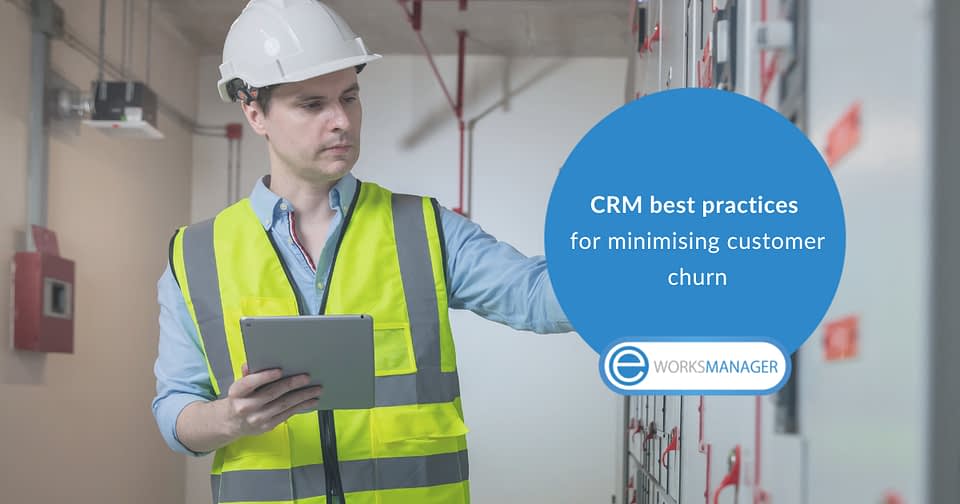Our hyper-connected world has made meeting customer expectations more challenging than ever. Clients expect faster response times, personalised services and seamless experiences. As a result, service businesses are experiencing a greater gap between customer expectations and experiences.
Customer expectation gaps pose several challenges for your business. To help you manage and prevent these gaps, we've compiled a guide detailing the practical steps you can take to bridge gaps and exceed customer expectations.

What is a customer expectation gap?
- A customer expectation gap is the difference between what customers expect from a product or service and their experience. It occurs when there is a disconnect between what customers believe they will receive from your business and what they actually receive.
- There are several reasons why customer expectation gaps arise:
- Miscommunication: Your customers may have certain expectations based on advertisements, marketing messages, or word-of-mouth, which may not align with your offerings.
- Unrealistic promises: Over-promising or making claims you can't fulfil creates a gap between customer expectations and reality.
- Lack of understanding: If you don't understand your customers' needs and preferences, you'll fail to meet their expectations.
- Inconsistent service delivery: If you don't maintain a consistent level of service, you could end up with a customer expectation gap.
- Competitor comparison: Your customers may form expectations based on their experiences with your competitors. If you fall short in comparison, a gap may arise.
- Evolving customer expectations: As your clients' expectations change, you may struggle to meet them, leading to a bigger customer expectation gap.
The consequences of a customer expectation gap
- Customer expectation gaps can hurt your reputation, customer relationships, and business performance. We've highlighted some of the most common consequences to show you how harmful these gaps can be:
- Dissatisfied customers: Failing to meet expectations will leave customers feeling unhappy or disappointed, leading to a decline in satisfaction.
- Increased customer turnover: If customers' expectations aren't met, they'll be less likely to continue using your services, leading to increased customer turnover.
- Negative word-of-mouth: Unhappy customers are more likely to share their negative experiences. Negative publicity can taint your reputation and deter potential customers.
- Decline in sales and revenue: Your clients may stop purchasing your services if they find a service provider who can meet their expectations.
- Reduced competitive advantage: If your competitors know how to meet customer expectations, they'll attract more customers and gain a stronger foothold in the market.
How to close a customer expectation gap: 10 steps
- A disconnect between expectation and experience can be detrimental, but you can avoid all this by closing the gap.
- Here are some steps you can take to address and prevent customer expectation gaps:
1. Understand customer expectations
- Knowing what your customers want empowers you to provide a service that matches their expectations. To gain insight into your customers' expectations, conduct market research, collect client feedback, and study your competitors to see how they meet customer expectations.
2. Set realistic expectations
- Don't make promises you can't keep, as over-promising and under-delivering can increase customer dissatisfaction. Instead, set realistic expectations to ensure your customers know what to expect. Realistic expectations can help you close expectation gaps and create a positive customer experience.
3. Improve communication
- Effective communication can help you manage customer expectations. Provide clear information about your services, including response times and potential delays, to prevent misunderstandings that could widen the gap. Establish clear communication channels so clients can ask questions about your services.
4. Train and support your team
- Empowering your field workers with the right skills, knowledge, and resources can help you bridge your gap. Well-trained employees are more likely to deliver high-quality services, helping you improve customer experiences. Training should cover communication, problem-solving and technical skills to ensure your team can connect with clients, find the best solutions and deliver quality services.
5. Track performance
- Use Key Performance Indicators (KPIs) to track performance and find ways to improve your operations to ensure you deliver the service promised to clients. Monitor metrics like response time, first-time fix rate, and customer satisfaction to identify areas of improvement.
6. Ask for customer feedback
- Encourage customers to provide feedback whenever you deliver a service. Feedback can help you determine what's working and what you need to work on. You can use this information to improve service delivery to meet and exceed customer expectations.
7. Use digital tools
- Digital tools like Field Service Management Software empower you to deliver quality services through automation. Automating job scheduling, appointment reminders, quoting, and invoicing can help you improve time management, efficiency and productivity to prevent delays, maximise output and maintain quality.
8. Empower customers with self-service options
- Invest in self-service portals or mobile apps so customers can request services, view job statuses, and access relevant information without contacting you. Self-service options can reduce waiting times and improve satisfaction, helping you create a positive customer experience.
9. Resolve complaints promptly
- When customers have concerns or complaints, address them promptly to show them you value their feedback and are committed to resolving their issues. An efficient complaints process can help you turn negative experiences into positive ones, helping you exceed customer expectations.
10. Celebrate positive customer experiences
- Share positive customer experiences to show clients and prospects you can deliver services that meet their expectations. A loyal customer's praise for your business proves you're committed to and capable of exceeding expectations.
Final thoughts
- Closing the gap between customer expectations and experience is an ongoing process. Listen to your customers, adapt to changing needs, and strive to exceed their expectations to build long-lasting relationships with them.
Want to learn more about our Field Service Management Software?
Contact us to book an online demo, or start your 14-day free trial to see if Eworks Manager is the right solution for your business.



